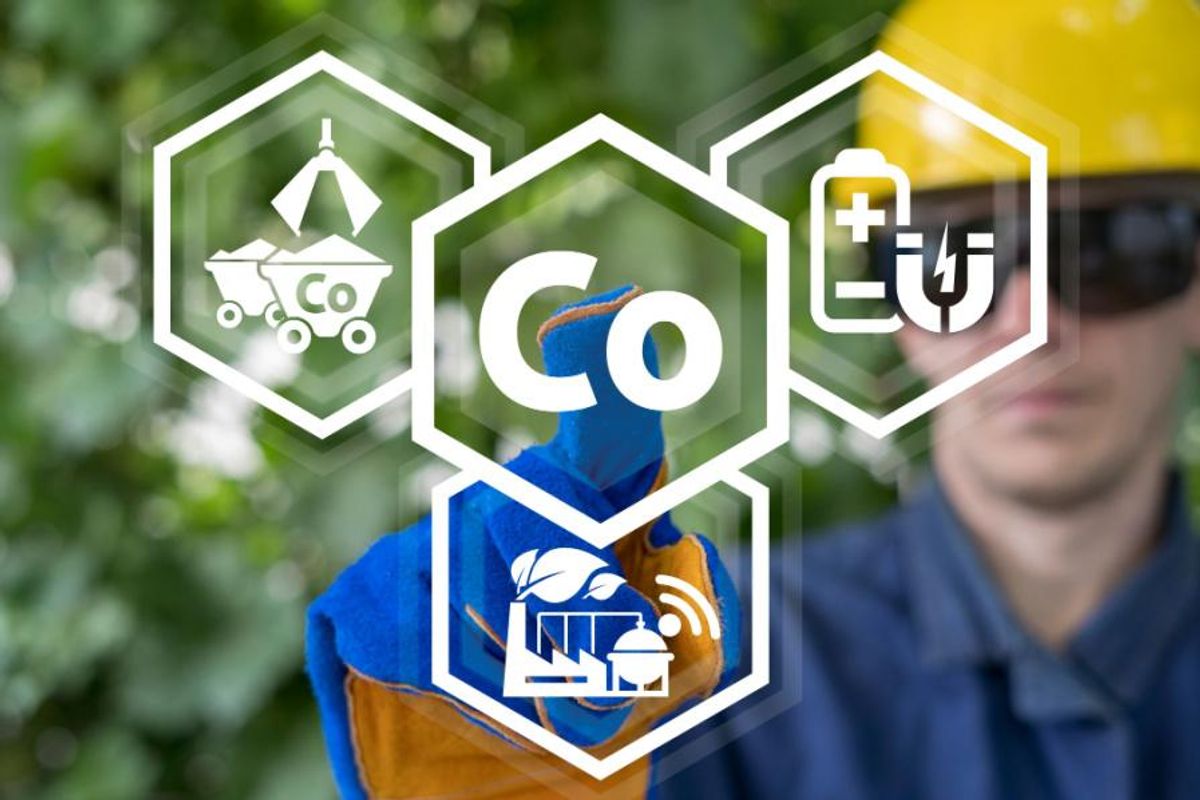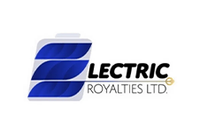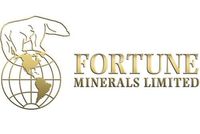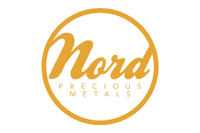Cobalt Market Update: Q3 2022 in Review
What happened to cobalt in Q3 2022? Our cobalt market update outlines key market developments and explores what could happen moving forward.

Click here to read the latest cobalt market update.
Battery metals continue to make headlines in 2022 as interest in electric vehicles (EVs) keeps surging.
In the first three months of the year, strong demand for cobalt supported higher prices, with some cobalt-focused stocks also seeing year-to-date gains. However, prices for the commodity cooled down in the second quarter as various supply and demand factors hit the market. Before the summer ended, prices had started to stabilize.
Read on to learn what else happened in the cobalt market in Q3, including the main supply and demand dynamics and what market participants are expecting for the rest of the year.
Cobalt market update: Price performance
Last year saw cobalt prices double on the back of strong demand from the EV sector, which surpassed smartphones as the top demand driver for the first time. After pulling back in the second quarter, prices began to stabilize in Q3.
“Spot demand for cobalt was tepid throughout (the third quarter), despite strong Chinese EV and battery production, given large inventories of raw material accumulated throughout 2022,” said Cameron Hughes of Benchmark Mineral Intelligence.
“The majority of demand from cell manufacturing was absorbed by long-term contracts, cobalt contained in mixed hydroxide precipitate from Indonesia and cobalt recycling.”
Prices found support in late August due to perceived tightness in the US superalloy market and robust alloy grade demand, according to Benchmark Mineral Intelligence data.
“This provided upward momentum for metal prices, which subsequently supported sulfate and hydroxide prices,” Hughes said. “As this tightness subsided in September, prices stabilized throughout the month.”
Also commenting on prices, Jack Bedder of Project Blue said that they were broadly flat in August and September, as supply was sufficient with limited infrastructural bottlenecks in Africa and Chinese refineries suitably supplied.
“Demand is sluggish, with lithium-cobalt-oxide demand in portable electronics subdued owing to trends in China,” he said.
Cobalt market update: Supply and demand
Demand from the EV sector was stronger than many had expected in 2021, but Chinese lockdowns paired with macroeconomic factors impacted the space in the first half of the year.
In Q3, macroeconomic headwinds continued to hit the cobalt sector, limiting demand from several industries.
The most significant impact has been on cobalt demand from consumer electronics, which is down almost 10 percent year-on-year, according to Benchmark Mineral Intelligence.
“There has also been limited demand from energy-intensive cobalt end markets, such as the ceramics industry, given increasing energy prices,” Hughes said. “Although sectors like ceramics are relatively small industries, this demonstrates a wider trend of energy-intensive processes having to be cut back.”
For Bedder, a global recession is increasingly likely, potentially extending well into 2023, while fears concerning China endure. The World Bank has cut China’s gross domestic product growth forecast to 2.8 percent in 2022 owing to weak demand, uncertainty over the “zero-COVID” policy, and its depressed (and distressed) property market.
“It will be the first time since the 1990s that Chinese growth lags the rest of Asia,” Bedder said. “The situation in China isn’t helping portable demand (and by extension light cycle oil demand).”
Moving to what may happen in the last quarter of the year, Project Blue expects EV demand to remain strong, while portables demand will pick up eventually. For Benchmark Mineral Intelligence, given continuous strong Chinese EV and battery production throughout Q3, raw material inventories are likely to be worked through in the last quarter of the year.
“EV demand in China is also likely to pick up as Q4 is a traditionally robust period for automakers, especially with Chinese EV subsidies expected to conclude at the end of 2022, which may feed upstream into the cobalt market,” Hughes said.
The consumer electronics sector is unlikely to improve, with Q3 traditionally being the strongest period given that major players like Samsung Electronics (KRX:005930) and Apple (NASDAQ:AAPL) release their new products.
“Macroeconomic headwinds are expected to persist in Q4, further limiting demand from many cobalt end markets,” Hughes said.
Looking at supply, cobalt mine output rose 12 percent year-on-year in 2021 to 160,000 metric tons after falling in 2020. The Democratic Republic of Congo (DRC) remained the top producer at 74 percent of global output and 87 percent of annual growth.
“There will be limited risk to supply-side fundamentals in Q4 as (throughout 2022) strong cobalt production, especially in the DRC, along with limited demand, has pushed the cobalt market into a significant surplus this year,” Hughes said.
Further disputes such as the one between China Molybdenum (OTC Pink:CMCLF,HKEX:3993) and Gécamines at the Tenke Fungurume mine are the largest risk to cobalt raw materials supply at the moment. Exports from the mine accounted for more than 10 percent of global cobalt output in 2021, but were suspended a month ago after a court-appointed temporary administrator demanded to halt exports, according to Reuters.
“The impact of the dispute has been limited by tepid demand for cobalt and large inventories, and is likely to be resolved before either party is damaged by the disagreement,” Hughes explained to the Investing News Network. “Any subsequent disputes are likely to have a similar impact on the market.”
Project Blue’s Bedder pointed out that cobalt material is flowing out of Africa reasonably easily at the moment. “But any changes there could add tightness (to the market),” he added.
Cobalt market update: What’s ahead?
As the last quarter of the year unfolds, there are a few catalysts investors interested in the cobalt space should watch out for.
For Hughes, the major trend to look out for in Q4 is a significant uptick in Chinese EV sales given that the government will stop providing subsidies at the end of 2022.
“Although many customers will purchase vehicles in Q4, they will not receive them until a later date; despite this, they will still be eligible for the subsidies,” Hughes said. “Therefore, Chinese EV sales in Q4 will be especially high.”
A significant number of these EVs will be produced in Q4, which will feed upstream into cobalt demand.
“That said, it is important to note much of this demand will be absorbed by long-term contracts and cobalt from Indonesian (mixed hydroxide precipitate)," Hughes said.
In terms of pricing, cobalt prices are expected to remain stable over the coming weeks.
“(We also expect) rising demand to gradually work through inventories and incentivize more output,” Bedder said.
Looking ahead, robust alloy grade demand from the aerospace and military sectors may support prices in October, according to Benchmark Mineral Intelligence; however, market fundamentals suggest levels will subsequently fall.
“A market surplus and limited demand in most sectors, compounded by negative sentiment, is expected to cause another price retreat in Q4,” Hughes said.
“Furthermore, the arbitrage between Chinese and international metal prices will push Chinese sulfate producers to opt for metal production over sulfate production, which will then be sold into Europe, initiating further downward pressure on metal prices.”
Don’t forget to follow us @INN_Resource for real-time news updates!
Securities Disclosure: I, Priscila Barrera, hold no direct investment interest in any company mentioned in this article.
Editorial Disclosure: The Investing News Network does not guarantee the accuracy or thoroughness of the information reported in the interviews it conducts. The opinions expressed in these interviews do not reflect the opinions of the Investing News Network and do not constitute investment advice. All readers are encouraged to perform their own due diligence.



